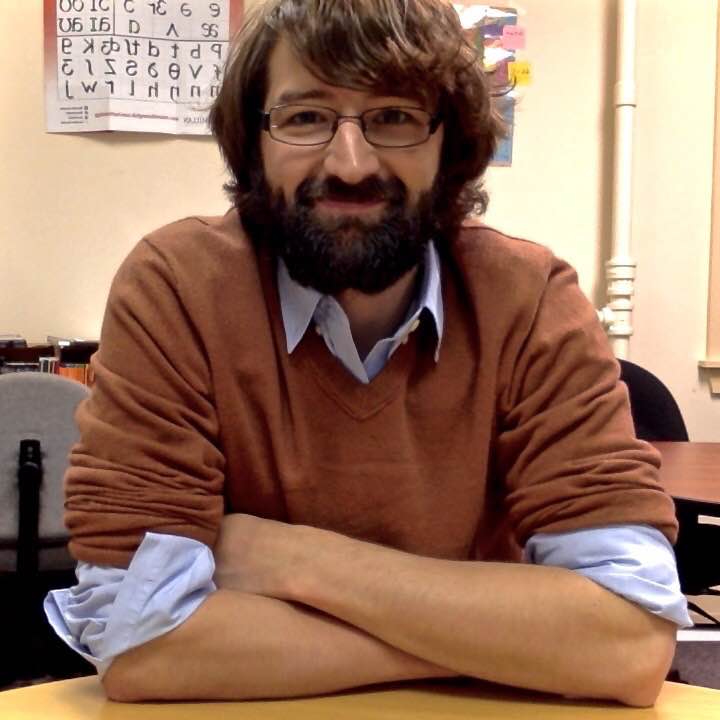Free TESOL Quarterly Article: "Sociocultural Theory and Task-Based Language Teaching: The Role of Praxis"
by Anne Feryok
This article first appeared in TESOL Quarterly, Volume 51, Number 3, pgs. 716–727. Subscribers can access issues here. Only TESOL members may subscribe. To become a member of TESOL, please click here, and to purchase articles, please visit Wiley-Blackwell. © TESOL International Association.
TESOL Quarterly publishes brief commentaries on aspects of qualitative and quantitative research
Edited by Daniel O. Jackson Kanda University of International Studies Chiba, Japan Alfred Rue Burch Rice University Houston, Texas, United States
The social psychologist Kurt Lewin famously wrote, “There is nothing more practical than a good theory” (1952, p. 169). Task-based language teaching (TBLT) has strong links to practical activities in the real world, and TBLT theory and research contributes to pedagogical practice. However, the relationship between theory and practice is primarily one-way, according to Bygate (2016), who argues that TBLT theory is tested in practice more often than practice is shaped by the theory.
It is a different matter, however, if one focuses on TBLT research conducted in sociocultural theory (SCT). SCT addresses the relationship between theory and practice through praxis, the idea that theory guides practice and practice shapes theory (see Vygotsky, 1987). Praxis is central to a sociocultural approach to second language learning and teaching (Lantolf & Poehner, 2014; Lantolf & Thorne, 2006; van Compernolle, 2015), including research on tasks. In this article I look at how SCT contributes to TBLT through praxis.
In the first section of this article, I compare the practical relevance and psycholinguistic rationales underlying TBLT and SCT. I then provide a brief account of SCT that focuses on the core concepts of mediation and internalization. The rest of the article focuses on four contributions SCT research has made to TBLT that show how practice shapes theory. I conclude with the implications of praxis.
PRACTICAL RELEVANCE AND PSYCHOLINGUISTIC RATIONALES
Proponents of TBLT hold that tasks are pedagogically useful, practically relevant, and psycholinguistically valid. Perhaps no one has argued as strongly as Long (2015) that these qualities are related to a specific understanding of TBLT based on the cognitive-interactionist theory (CIT) of instructed second language acquisition. Long does not consider SCT to make much of a contribution because of its “nebulous core constructs” (p. 35). However, SCT concepts are researched using visible social processes and based on early neurological research that contributed to the development of modern psycholinguistics and neurolinguistics (Levelt, 2013). Arguably, acquisition, which Chomsky famously located in a black box, is no less nebulous than internalization.
In any case, an inclusive approach that acknowledges the research contributions of SCT reflects the views of other strong proponents of TBLT, which is evident in books by Ellis (2003), Samuda and Bygate (2008), and Van den Branden (2006). Research studies explicitly include both SCT and CIT concepts and methods (e.g., Foster & Ohta, 2005; Eckerth, 2008); many others draw on SCT methods, such as analyzing learner interactions for language-related episodes (Swain & Lapkin, 1998). Robinson's (2011) overview of task issues describes how internalization has made several contributions to task research. Another SCT contribution is its caution in attributing psycholinguistic validity to tasks themselves. Although tasks influence learner responses, their value is in the significance that learners find in them (Lantolf, 2011).
This article first appeared in TESOL Quarterly, 51, 716–727. For permission to use text from this article, please go to Wiley-Blackwell and click on "Request Permissions" under "Article Tools."
doi: 10.1002/tesq.390
TESOL Blogs
Interested in writing a blog for TESOL?
Read the submission guidelines and send us your post!
Check out a few of the most popular TESOL Blogs from the past year:
|
Pull-Out vs Push-In ESL Programs in Elementary Schools, by Judie Haynes
 After lively discussions on the NJTESOL/NJBE member hotlist and during a Twitter #ELLCHAT, I realized that pull-out ESL vs. having ESL teachers push-in to the general education classroom is still a hot-button issue for practitioners in the field. I invited Monica Schnee, an ESL practitioner in River Edge, a K–6 district in New Jersey, to write a guest blog on this issue. Monica has gone from teaching exclusively using a pull-out ESL model to mostly coteaching, and I feel that she sees the benefits of each model. Her ESL program is a NJ model program benefiting all students and practitioners. Read more. After lively discussions on the NJTESOL/NJBE member hotlist and during a Twitter #ELLCHAT, I realized that pull-out ESL vs. having ESL teachers push-in to the general education classroom is still a hot-button issue for practitioners in the field. I invited Monica Schnee, an ESL practitioner in River Edge, a K–6 district in New Jersey, to write a guest blog on this issue. Monica has gone from teaching exclusively using a pull-out ESL model to mostly coteaching, and I feel that she sees the benefits of each model. Her ESL program is a NJ model program benefiting all students and practitioners. Read more.
|
|
Role-Playing the Present Perfect: A Speaking Activity, by Alexandra Lowe
 In a recent post, I described having my students “eavesdrop” on how the present perfect tense is actually used in the world they live in: at work, on TV, on the Internet, and by their children as they speak English with their friends. As promised, here is one of the activities I have used successfully in intermediate-level classes to put what my students discovered into practice. Read more. In a recent post, I described having my students “eavesdrop” on how the present perfect tense is actually used in the world they live in: at work, on TV, on the Internet, and by their children as they speak English with their friends. As promised, here is one of the activities I have used successfully in intermediate-level classes to put what my students discovered into practice. Read more.
|
|
Fluency and Accuracy Activities: Striking a Balance, by Robert Sheppard
 In everyday usage, fluent is often used interchangeably with proficient, as in, He’s pretty fluent in Arabic. But in language teaching, fluency is a bit more technical and just one component of language proficiency, often discussed in tandem with accuracy: Some learners speak very fluently, but their speech may be riddled with errors. Conversely, some learners speak haltingly but with a great deal of accuracy. Read more. In everyday usage, fluent is often used interchangeably with proficient, as in, He’s pretty fluent in Arabic. But in language teaching, fluency is a bit more technical and just one component of language proficiency, often discussed in tandem with accuracy: Some learners speak very fluently, but their speech may be riddled with errors. Conversely, some learners speak haltingly but with a great deal of accuracy. Read more.
|